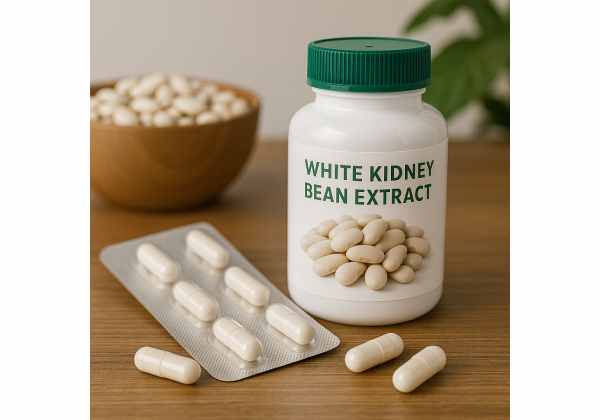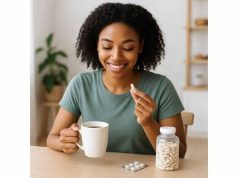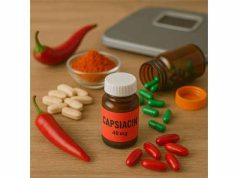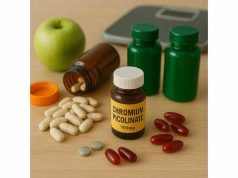
White kidney bean extract is marketed as a “carb blocker.” The promise is simple: take a capsule before a starchy meal and absorb fewer calories. In practice, results depend on the product, the dose, the amount of starch in the meal, and how you eat the rest of the day. This guide explains exactly how the extract works, how to use it without stomach drama, and what outcomes are realistic. If you are weighing supplements alongside prescriptions or nutrition strategies, start with our overview of evidence-based options for weight management—then come back here to decide if a carb blocker fits your plan.
Table of Contents
- What is white kidney bean extract?
- Does the carb blocker work for weight loss?
- Dose, timing and how to take it
- Who should try it and who should avoid
- Common mistakes and troubleshooting
- Side effects and interactions
- Evidence snapshot and alternatives
- Frequently Asked Questions
What is white kidney bean extract?
White kidney bean extract (from Phaseolus vulgaris) contains proteins that inhibit alpha-amylase, the main enzyme that breaks long starch chains into absorbable sugars. When you swallow the extract shortly before eating, less starch is digested during that meal. Because the mechanism is local to the gut, the extract does not directly affect fat or protein digestion, and it does not meaningfully alter calories from simple sugars (e.g., table sugar, juice).
What “carb blocking” means in real meals
- It targets starches—think pasta, bread, rice, potatoes, tortillas, breakfast cereals.
- It does not block sugars in fruit or soda and does nothing for dietary fat.
- The effect is dose- and meal-dependent: larger starch servings offer more to block, but also raise the risk of bloating or gas if undigested carbs reach the colon.
Why people consider it
- To blunt the calorie impact of occasional high-starch meals.
- To reduce post-meal spikes in appetite that can follow big servings of refined carbs.
- As a non-stimulant option compared with fat burners or appetite suppressants.
Where it fits in a broader plan
Carb blocking is situational. It works best when you already eat protein-forward, fiber-rich meals and want insurance for starch-heavy occasions. If you are new to weight management, review core habits—protein at each meal, 25–35 g fiber daily, and basic movement—in our foundation guide to safe, sustainable weight loss. Supplements work best on top of those basics.
What outcomes are plausible
Trials generally report modest support for weight loss when standardized extracts are taken correctly before starch-rich meals, alongside calorie-aware eating. Expect small reductions in calorie absorption—not license to eat unlimited pasta. Over weeks, small, repeated calorie gaps can add up.
Bottom line: White kidney bean extract is a starch-specific tool. Used properly, it can trim calories from carb-heavy meals; used indiscriminately, it disappoints and may cause GI upset.
Does the carb blocker work for weight loss?
Short answer: It can, but the effect is modest and conditional. The extract has its best chance to help when:
- Doses are standardized and taken just before starch-rich meals.
- Those meals truly contain meaningful starch (e.g., a bowl of pasta or a burrito with rice).
- Your overall intake remains balanced—you do not “eat back” the saved calories with extra fat, alcohol, or dessert.
What to expect on the scale
Across controlled trials using standardized extracts, average losses trend small but measurable over 8–12 weeks when participants take capsules before most starch-containing meals. The higher your baseline starch load, the more noticeable the effect can be—up to a point. On lower-carb patterns, there is little to block, so differences shrink.
Beyond the scale
- Some people notice less post-meal sleepiness or a smoother appetite curve after high-starch meals.
- Waist measurements may change slowly unless you also adjust protein intake and activity.
Who tends to be a “responder”
- People who routinely eat refined starches (white bread, pasta, rice) and are not ready to overhaul every meal.
- Those who want a non-stimulant supplement with a clear use case (pizza night, pasta dinners, holiday meals).
- People who tolerate beans well (fewer GI complaints).
Who may not see much benefit
- Low-carb eaters; there is simply less substrate to block.
- People who pair the supplement with high-fat meals; calories shift from carbs to fat, and total energy stays high.
- Anyone expecting drug-level weight loss; effects are supplement-scale.
If you are curious how these results compare with other plant-based options promising small effects, see our review of green coffee bean extracts for context.
Takeaway: Think of white kidney bean extract as a calorie nudge for starch-heavy meals, not a stand-alone solution.
Dose, timing and how to take it
Standardized extract matters. Look for products specifying a standardized alpha-amylase inhibitor (often branded “Phase 2” or similar) with a per-capsule amount listed.
Typical use patterns
- Dose: Common ranges are 750–1,500 mg of standardized extract per starch-containing meal. Some labels suggest up to 2,000–3,000 mg for very high-starch meals; follow your product’s instructions and do not exceed the daily maximum on the label.
- Timing: Take the capsule(s) 5–15 minutes before eating starch. Too early and the proteins may be degraded; too late and the enzyme is already at work.
- Frequency: Use with meals that include substantial starch (e.g., pasta entrée, rice bowl, large sandwich). There is little value in taking it before a salad or steak with non-starchy vegetables.
Meal design for fewer side effects
- Anchor with protein (25–35 g) and add vegetables for fiber. Protein slows gastric emptying and steadies appetite.
- Favor whole-grain or al dente starches; they digest more slowly and produce fewer symptoms than ultra-refined varieties.
- Keep added fat moderate; blocking carbs while adding butter, cheese, or fried toppings cancels the calorie advantage.
How to tell if it is working
- Track post-meal fullness and energy dips during a couple of typical starch-heavy meals with and without the supplement.
- Watch weekly weight averages rather than day-to-day fluctuations (hydration and sodium can mask small changes).
- Consider measuring waist circumference every 2–4 weeks for a read on central fat change.
Stacking with other strategies
- A small pre-meal protein shake (10–20 g) plus the extract before a high-starch dinner can reduce portion size and later snacking.
- If breakfast is your most starchy meal, standardize it (e.g., eggs plus oats or Greek yogurt plus fruit) rather than using the extract daily.
For help reading labels—doses, proprietary blends, and third-party seals—see our quick guide to interpreting supplement labels for weight control.
Bottom line: Dose and timing are non-negotiable. Take the right amount shortly before a starch-rich meal, and keep total calories grounded with protein and vegetables.
Who should try it and who should avoid
Good candidates
- You routinely eat starch-heavy meals (e.g., pasta nights, rice bowls, bread-centric lunches) and are not ready to overhaul every menu.
- You prefer non-stimulant supplements and want help specifically with carb-dense occasions.
- You tolerate legumes and beans without significant GI distress.
- You are aiming for modest calorie reduction as part of a broader plan with protein, fiber, movement, and sleep.
Use caution or avoid
- Diabetes or reactive hypoglycemia: delaying carb absorption can shift glucose curves; review timing and monitoring with your clinician, especially if you take insulin or sulfonylureas.
- IBS, IBD, or chronic GI sensitivity: undigested starch reaching the colon can increase gas and bloating. Start low and test tolerance.
- Legume allergy: avoid (source is bean protein).
- Pregnancy or breastfeeding: skip weight-loss supplements; focus on balanced nutrition.
- Chronic kidney disease or significant medical complexity: review with your care team first.
When a different tool is better
- If you want double-digit weight loss or have significant metabolic disease, prescription options (e.g., weekly incretin therapies) often deliver larger, more reliable effects when paired with routine changes. Learn what to expect in our overview of GLP-1–based medications.
Practical trial plan
- Try the extract for 4–6 weeks with two starch-heavy meals per day max.
- Track meal size, satiety, and weekly weight averages.
- Keep protein, fiber, and steps steady; if nothing shifts after six weeks, the supplement is unlikely to be a meaningful lever for you.
Common mistakes and troubleshooting
Mistake 1: Taking it with low-carb meals
No starch, nothing to block. Save it for meals with substantial starch (e.g., pasta entrée, large burrito, sushi with rice).
Mistake 2: Dosing too early or too late
The sweet spot is 5–15 minutes before eating. Earlier and activity declines; later and starch digestion is already underway.
Mistake 3: Expecting fat blocking
The extract does not block fat. If you add butter, creamy sauces, cheese, or fried sides, you can erase the calorie benefit.
Mistake 4: Ignoring protein and fiber
Protein (25–35 g per meal) and fiber (25–35 g/day) stabilize appetite and reduce GI side effects. Add legumes, vegetables, oats, or psyllium as needed.
Mistake 5: “Eating back” the difference
A smaller glucose bump or reduced portion size is not a ticket to dessert. Keep liquid calories and sweets modest.
Mistake 6: Choosing non-standardized products
Potency varies widely. Look for products stating standardized alpha-amylase inhibitor content and independent testing.
Troubleshooting GI symptoms
- Gas/bloating: reduce meal starch by one-third; choose whole grains over refined; consider a short walk after meals.
- Loose stools: check for hidden sugars and high-fat add-ons; scale back serving size.
- No effect on portions: verify timing and dose; audit the rest of the plate (added fats, sauces, sugary drinks).
For product quality and reliability, prioritize brands with independent certification (USP, NSF, Informed Choice). Our explainer on third-party testing for supplements shows what each seal means and how to spot red flags.
Side effects and interactions
Common, usually dose-related
- Gas, bloating, abdominal discomfort: undigested starch reaches the colon, where gut bacteria ferment it. Start with lower doses and smaller starch portions.
- Changes in stool (looser or more frequent): often improve as you adjust meal composition and timing.
- Nausea in sensitive users: reduce dose, choose lower-fat sauces, and avoid very large meals.
Less common, but important
- Cramping or diarrhea with large refined-starch meals; shift to whole grains, cut portion size, and reassess dose.
- Allergic reactions in people sensitive to legumes—stop immediately and seek care if you notice hives or breathing difficulty.
Interactions and special situations
- Diabetes medications (insulin, sulfonylureas): delayed carb absorption can change glucose patterns; monitor closely when you start or change timing. Coordinate with your clinician to avoid hypoglycemia.
- Oral medications with critical timing: if you take time-sensitive drugs with meals, ask your clinician or pharmacist whether to separate dosing.
- Athletes using carb timing: pre-training carb availability may shift; test on non-critical sessions first.
Safety pointers
- Use only standardized products from reputable brands.
- Do not exceed label-stated daily maximums.
- If you develop persistent abdominal pain, fever, or blood in stool, stop and seek medical evaluation.
Looking for a supplement that influences glucose more broadly (with its own pros and cons)? Review our safety notes before considering berberine.
Evidence snapshot and alternatives
Evidence summary
- Mechanism is plausible and specific: alpha-amylase inhibition reduces starch breakdown during the target meal.
- Trials using standardized extracts show small, favorable changes in weight and waist when capsules are taken consistently before starch-rich meals and paired with calorie-aware eating.
- Effects are meal-bound: you only block what you would have digested from that meal. Daily totals and food choices remain the primary drivers of progress.
How it compares with other over-the-counter options
- Fiber supplements (glucomannan, psyllium): improve fullness across all meals, support regularity, and can lower calorie intake broadly. A strong companion or alternative if GI tolerance is good.
- Vinegar or polyphenol extracts: sometimes blunt post-meal glucose; weight effects are modest and variable.
- “Fat burners” and stimulants: may increase jitteriness or heart rate with limited long-term benefit; approach cautiously.
Prescription alternatives when you need more
- If you want 10%+ weight loss or have significant metabolic risk, prescription therapies (e.g., weekly incretin medications) often produce larger average reductions when combined with protein-forward meals, fiber, and basic movement.
- Pill-based options (e.g., naltrexone-bupropion or phentermine-topiramate) can support craving control or portion reduction if injections are not for you.
Practical strategy
- Build the base: protein at every meal, vegetables, 25–35 g fiber/day, consistent sleep, and a walk or short lift most days.
- Test the tool: use standardized white kidney bean extract for 4–6 weeks before starch-rich meals only; track outcomes.
- Decide and simplify: if it helps without GI trouble, keep it for pizza/pasta/rice nights. If not, redirect effort to fiber or, if appropriate, discuss medical therapy with your clinician.
Bottom line: White kidney bean extract can give a small assist when you eat starch-heavy meals. Its ceiling is modest; your foundation does the heavy lifting.
Frequently Asked Questions
Does white kidney bean extract really block carbs?
It inhibits alpha-amylase, the enzyme that digests starch, so fewer starch calories are absorbed from that meal. It does not block sugar or fat. The effect is modest and depends on dose, timing (5–15 minutes before), and the amount of starch you eat.
How much should I take and when?
Common doses are 750–1,500 mg of standardized extract per starch-containing meal, taken 5–15 minutes before eating. Follow your product label for maximum daily amounts. There’s little benefit if the meal has minimal starch or is mostly protein and vegetables.
Will it help if I eat low carb?
Probably not. With little starch to digest, there is nothing to block. You may do better emphasizing fiber and protein to maintain fullness, and saving the extract for occasional starch-heavy meals like pasta or pizza.
What side effects should I expect?
The most common are gas, bloating, and changes in stool, especially with large refined-starch meals. Starting with smaller doses, choosing whole grains, and keeping added fat modest reduces symptoms. Stop and seek care if you notice severe pain or allergic signs.
Can I take it with diabetes medications?
Use caution. Delayed carb absorption can shift glucose curves, especially with insulin or sulfonylureas. Discuss timing and monitoring with your clinician before starting, and check glucose more frequently during the first weeks.
Does it interact with fat loss medications?
It acts locally in the gut and generally does not interact directly, but stacking tools can complicate meals and expectations. If you use prescription therapies for weight management, ask your clinician whether a carb blocker adds value or just complexity.
References
- Proprietary alpha-amylase inhibitor formulation from white kidney bean (Phaseolus vulgaris L.) promotes weight and fat loss: a 12-week, double-blind, placebo-controlled, randomized trial 2024 (RCT)
- A randomized, double-blinded, placebo-controlled, single-center, comparative study evaluating Phaseolean® safety and efficacy in overweight/obese participants 2024 (RCT)
- White kidney bean extract as a nutraceutical: effects on gut microbiota, alpha-amylase inhibition, and user experiences 2023 (RCT)
- Common bean (Phaseolus vulgaris L.) α-amylase inhibitors as safe nutraceutical strategy against diabetes and obesity: An update review 2022 (Systematic Review)
- Systematic Review and Meta-Analysis of a Proprietary Alpha-Amylase Inhibitor from White Bean (Phaseolus vulgaris L.) on Weight and Fat Loss in Humans 2018 (Systematic Review)
Disclaimer
This article is for general education and does not replace personal medical advice, diagnosis, or treatment. Always speak with a qualified health professional before starting, stopping, or combining supplements or medications, changing doses, or making major diet and exercise changes—especially if you have chronic conditions, take prescription drugs, are pregnant, or are planning pregnancy.
If this guide helped you understand carb blockers, please share it with a friend who loves pasta night. For new evidence-based updates and practical tools, follow us on the social platform you already use—Facebook, X, Instagram, or LinkedIn.










